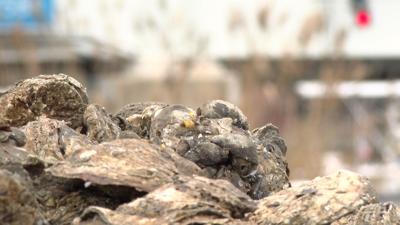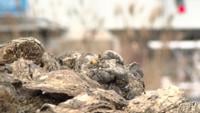CHESAPEAKE BAY, Md. - There are more oysters in the Chesapeake Bay today than at any point in the last two decades, according to Maryland’s Department of Natural Resources.
The department’s latest research shows the oyster population in Maryland’s portion of the Bay has grown significantly—reaching approximately 12 billion. That’s nearly triple the number of adult oysters recorded in 2005, which was 2.4 billion. Today, that number stands at 7.6 billion adults.
“It really speaks to an enormous amount of effort that's gone into place,” said Lynn Fegley, director of Fishing and Boating Services at Maryland DNR.
Much of the progress is attributed to long-term restoration work conducted by DNR in collaboration with NOAA, the U.S. Army Corps of Engineers, and the Horn Point Laboratory.
“We really started restoration efforts back in the late ‘90s, and we've been ramping up those efforts over the years,” said Stephanie Alexander, oyster hatchery director at Horn Point Laboratory.
The hatchery spawns and grows oysters that are later planted in five sanctuaries across the Bay.
DNR officials also credit favorable natural conditions for contributing to the population surge.
“Well, they like a little higher salinity, but a little higher salinity is also what makes the diseases kick off. So we really are working this balance between salinity and reproduction and disease. And we seem to be in a little bit of a sweet spot,” Fegley said.
Watermen say they’ve played a role in the rebound as well.
“I think it's a combination of a lot of the efforts that the public fishery had been putting in, between the shell plantings, the Spanish and shell plantings. We've had some new additions to new hatcheries in the state which have helped increase our production,” said Nick Hargrove, owner of Wittman Wharf on Tilghman Island.
An increase in oysters means more than just good news for the industry—it benefits the Bay’s ecosystem as well. Oysters help clean and filter water, provide habitats for smaller fish, reduce shoreline erosion, and support better harvests for watermen.
“So more oysters in the Bay helps everybody. Not only are they filtering and cleaning up the water as well as reducing nutrients, but they're also creating habitat for the other animals in the Bay. They're reproducing, adding to the population. They help with shoreline erosion because as the wave energy goes over the bars and slows it down—especially in Dorchester County, that's a very big thing with sea level rise and erosion happening—is very important,” Alexander said.
DNR conducts and releases this research every six years as part of its benchmark assessment.



